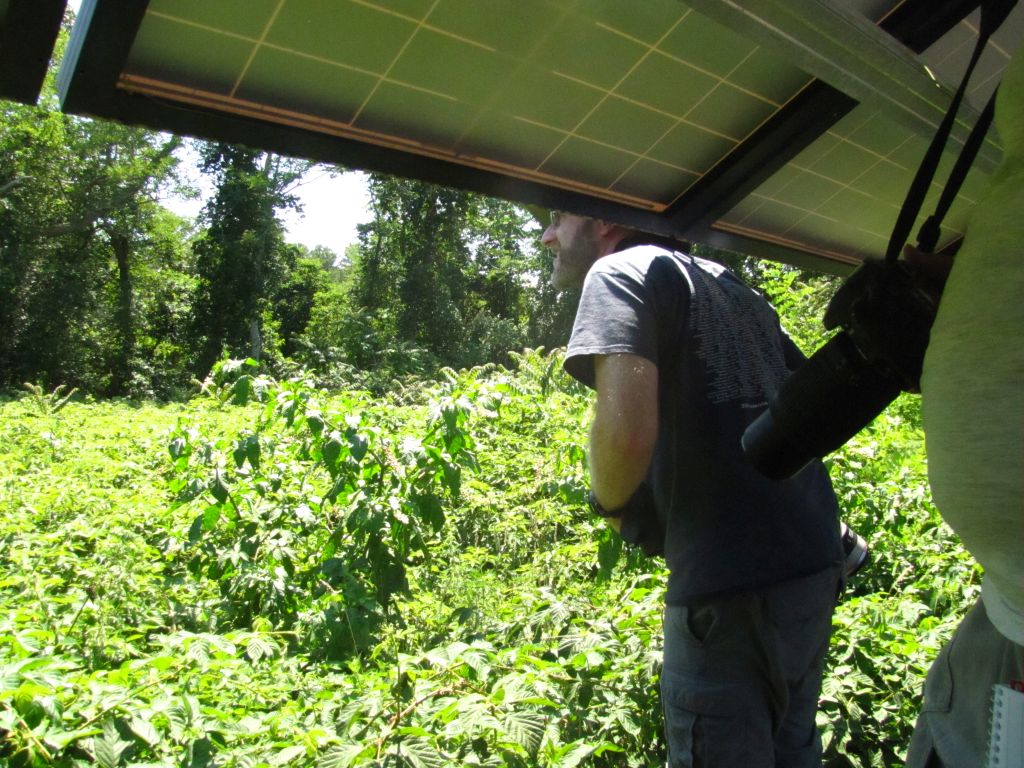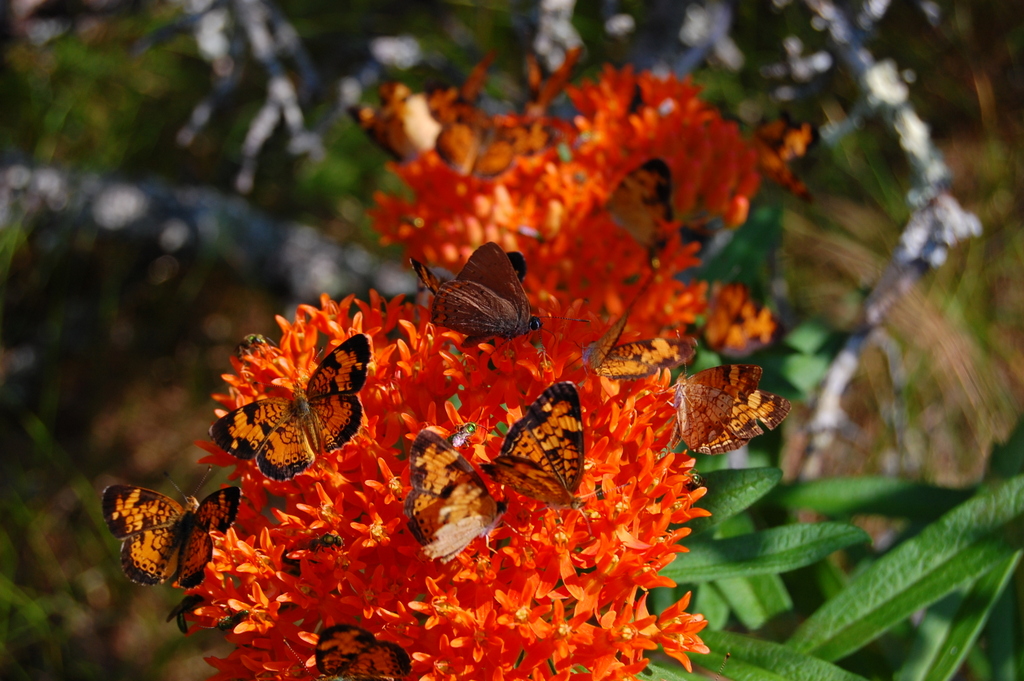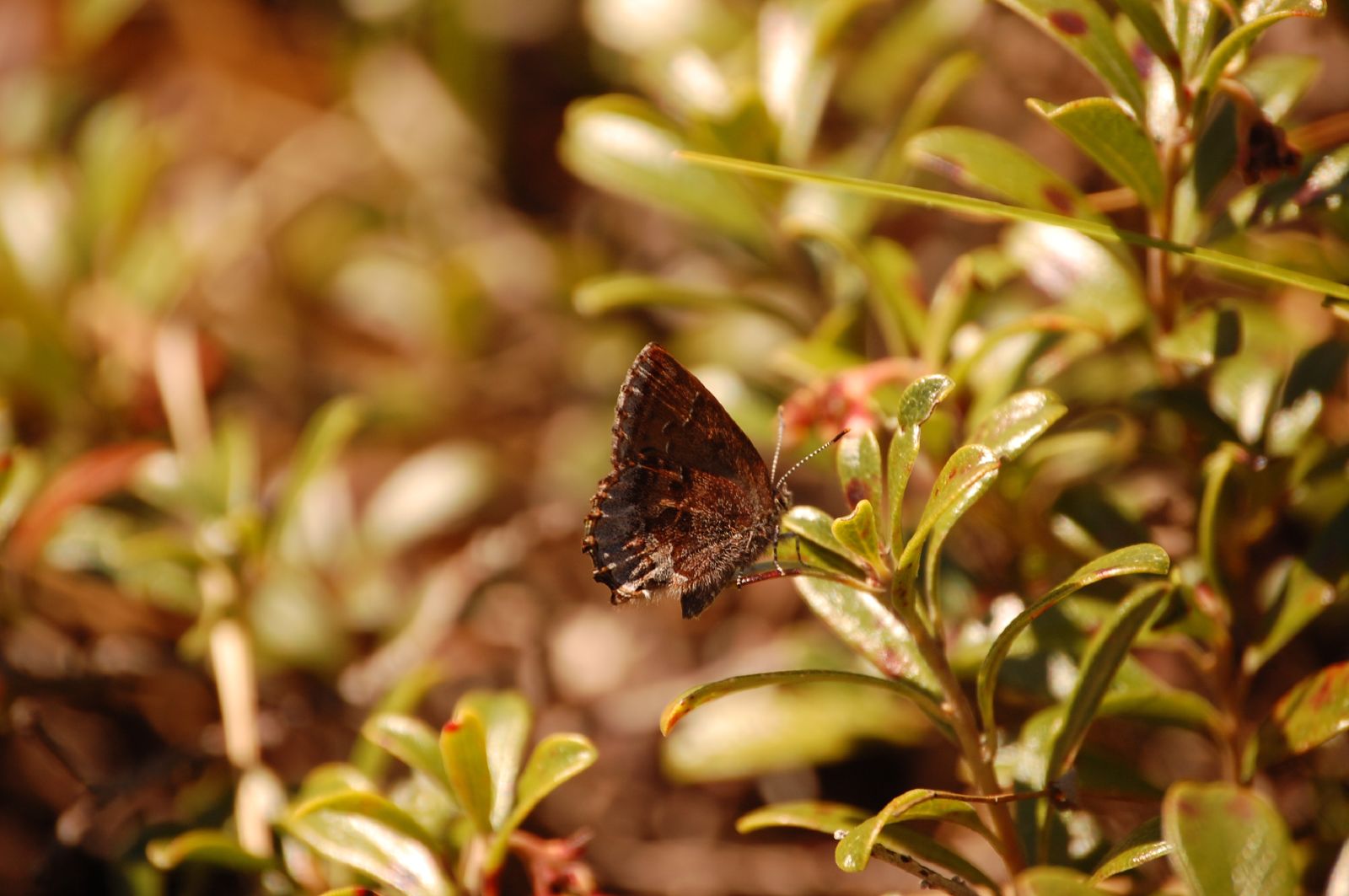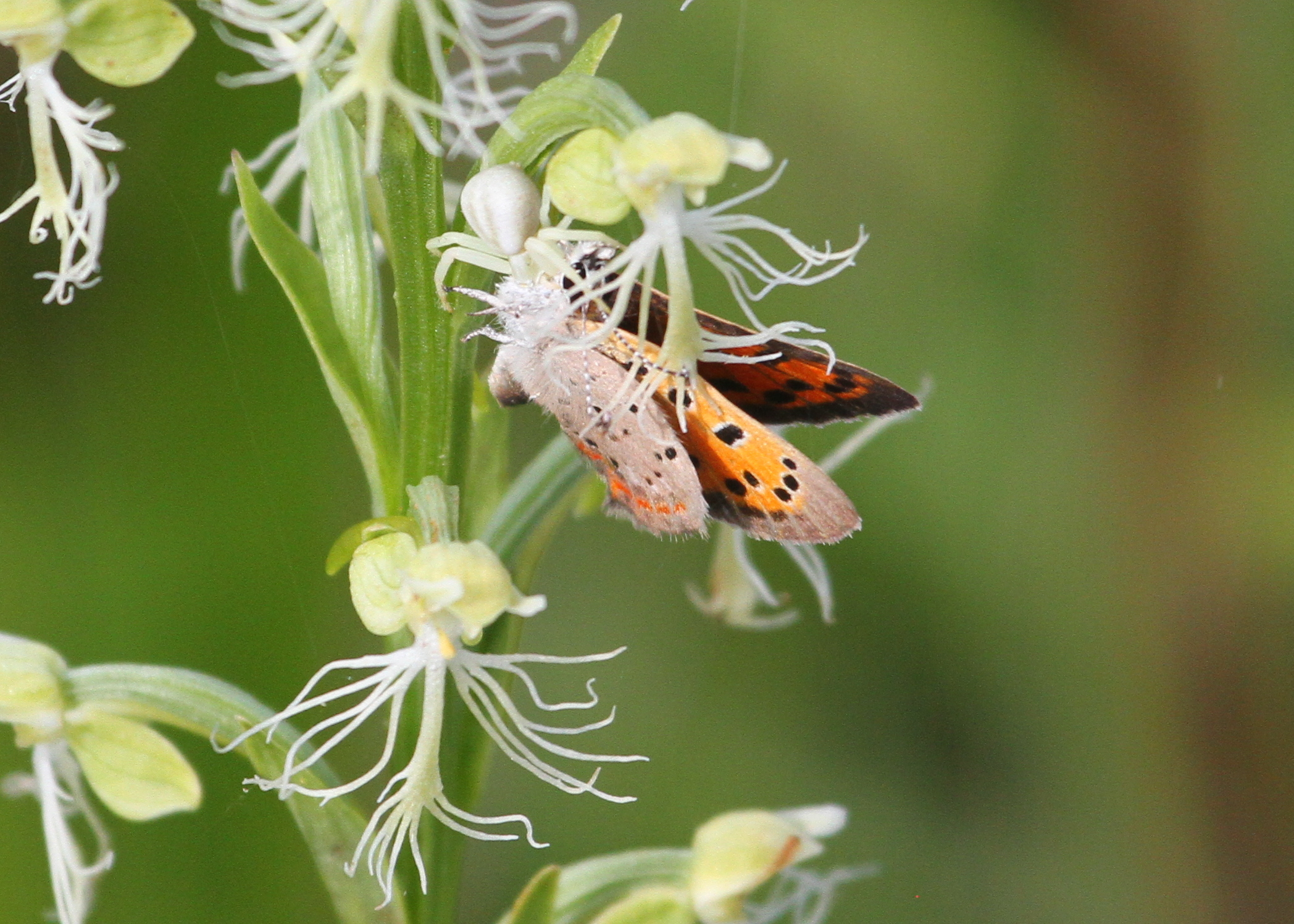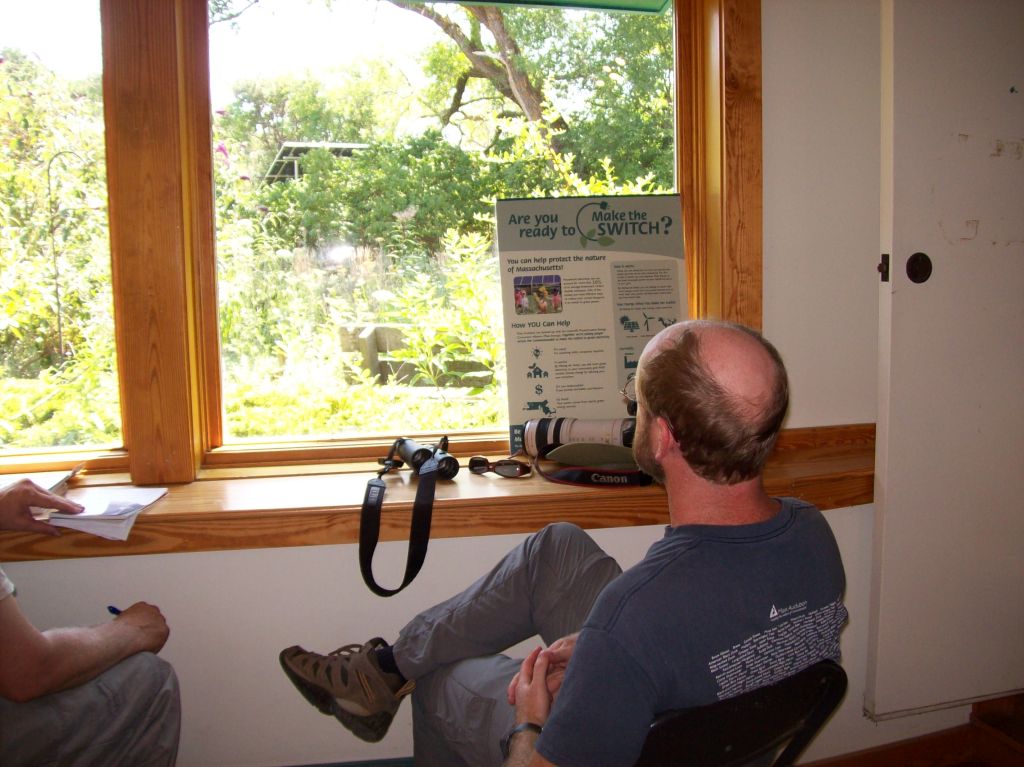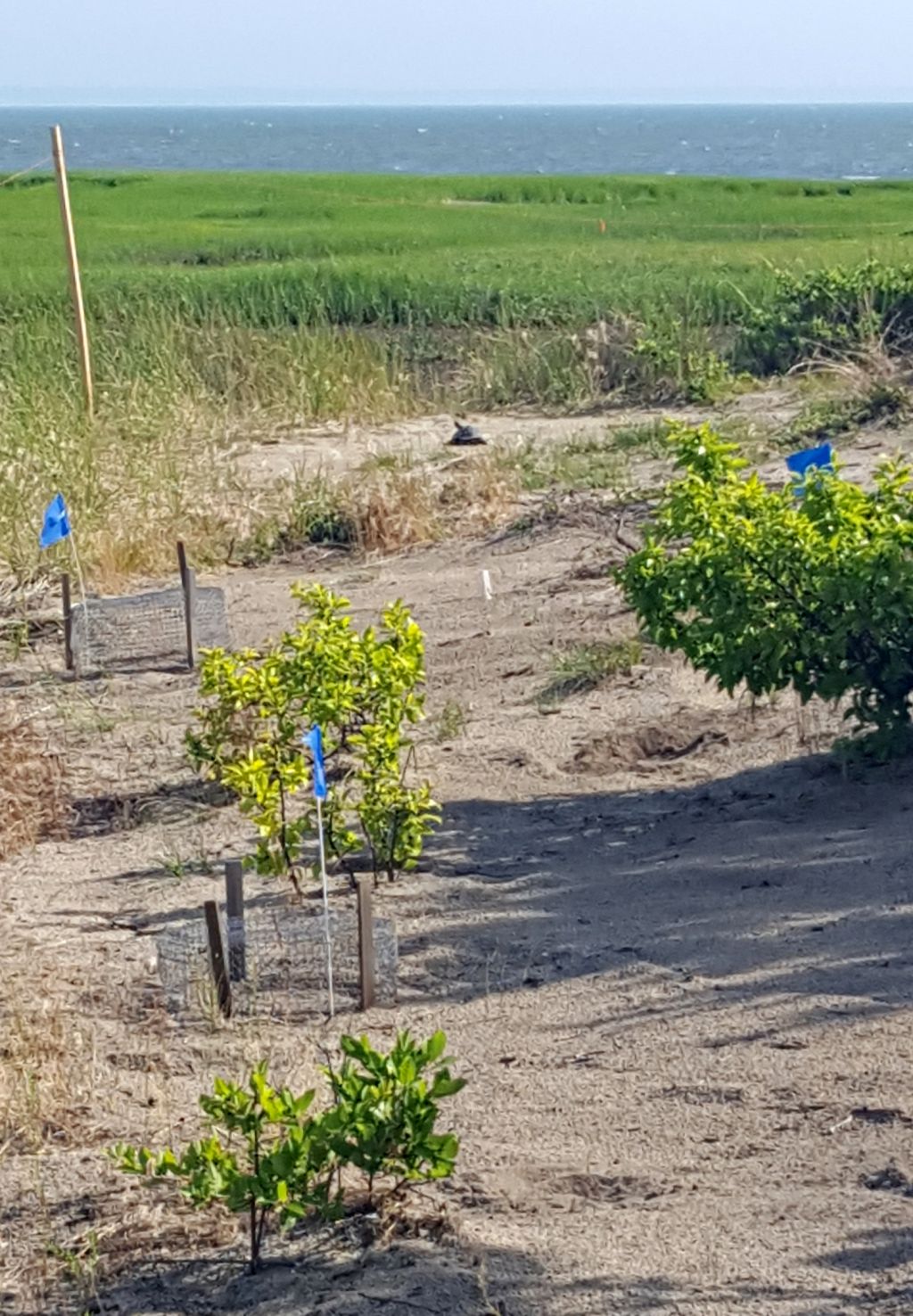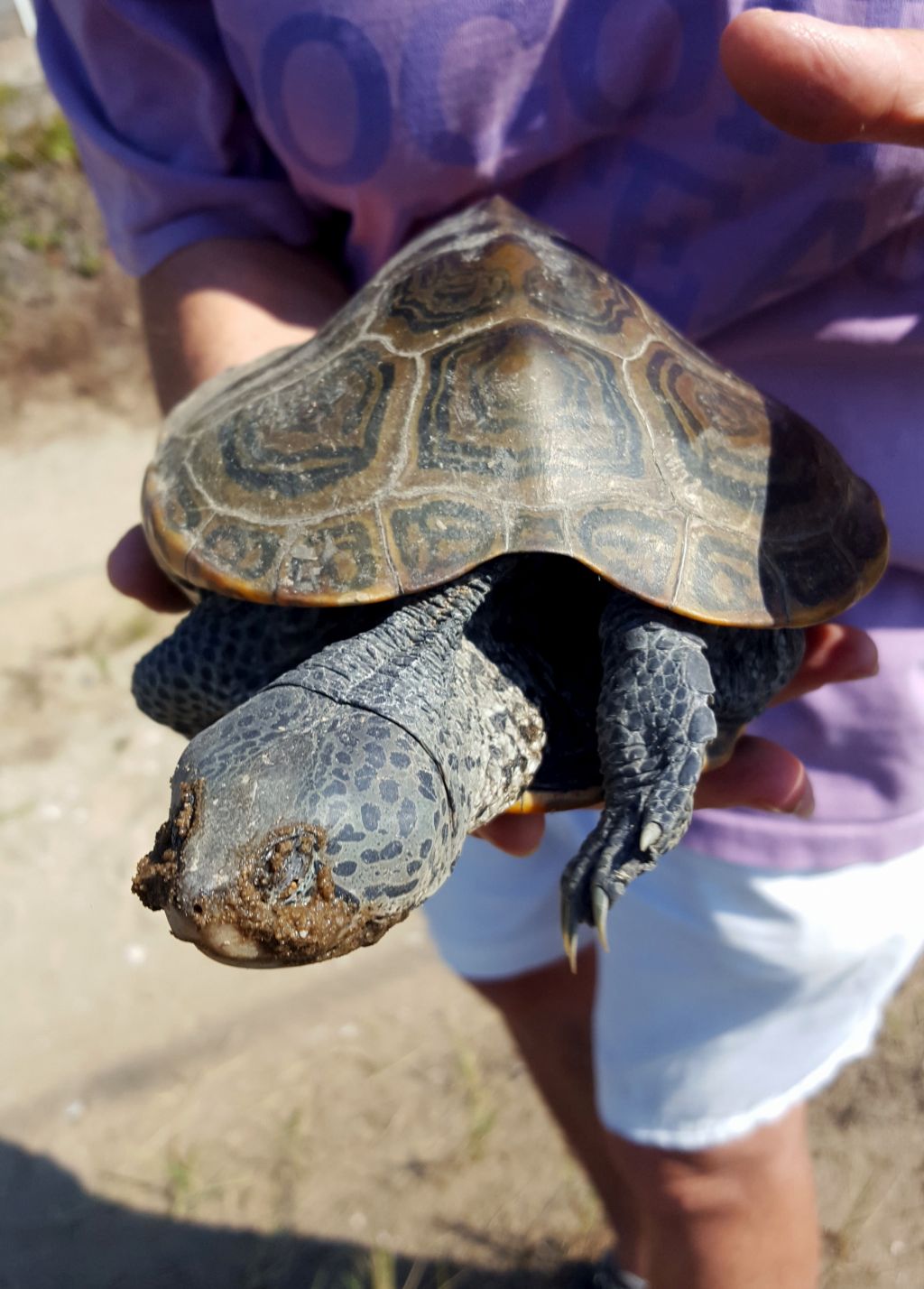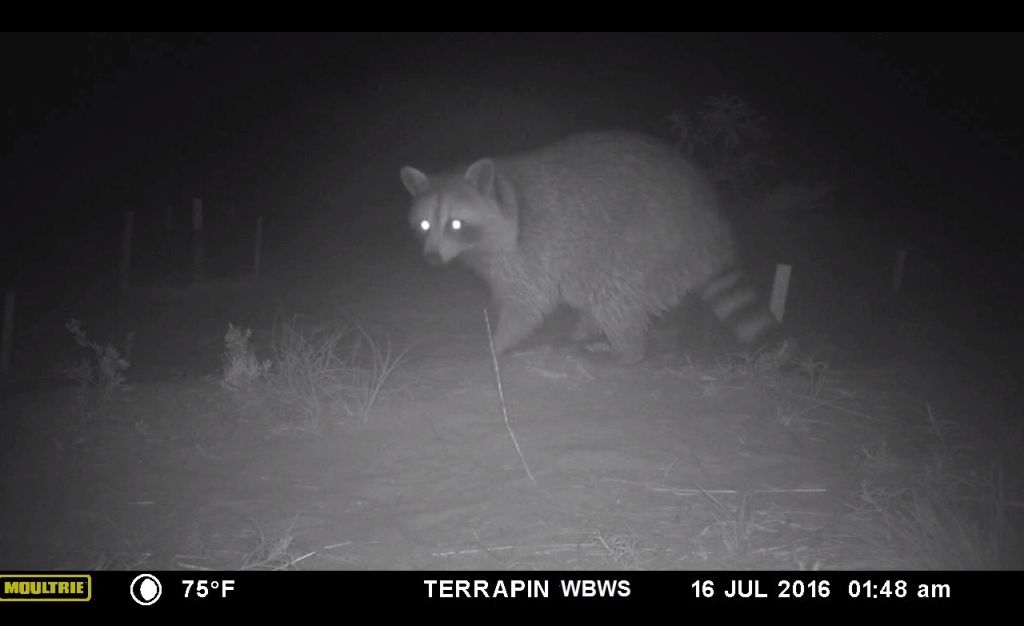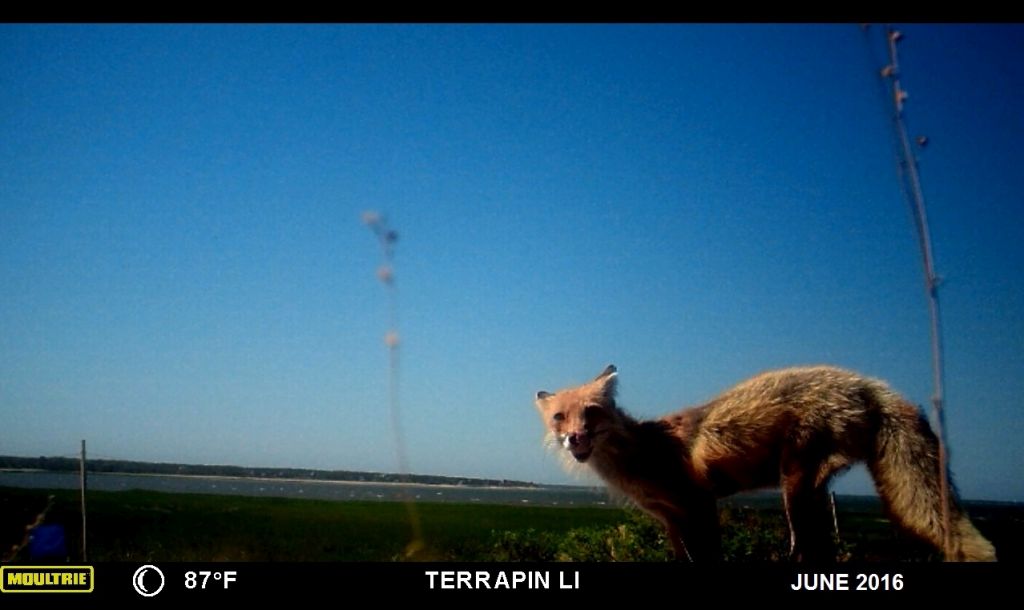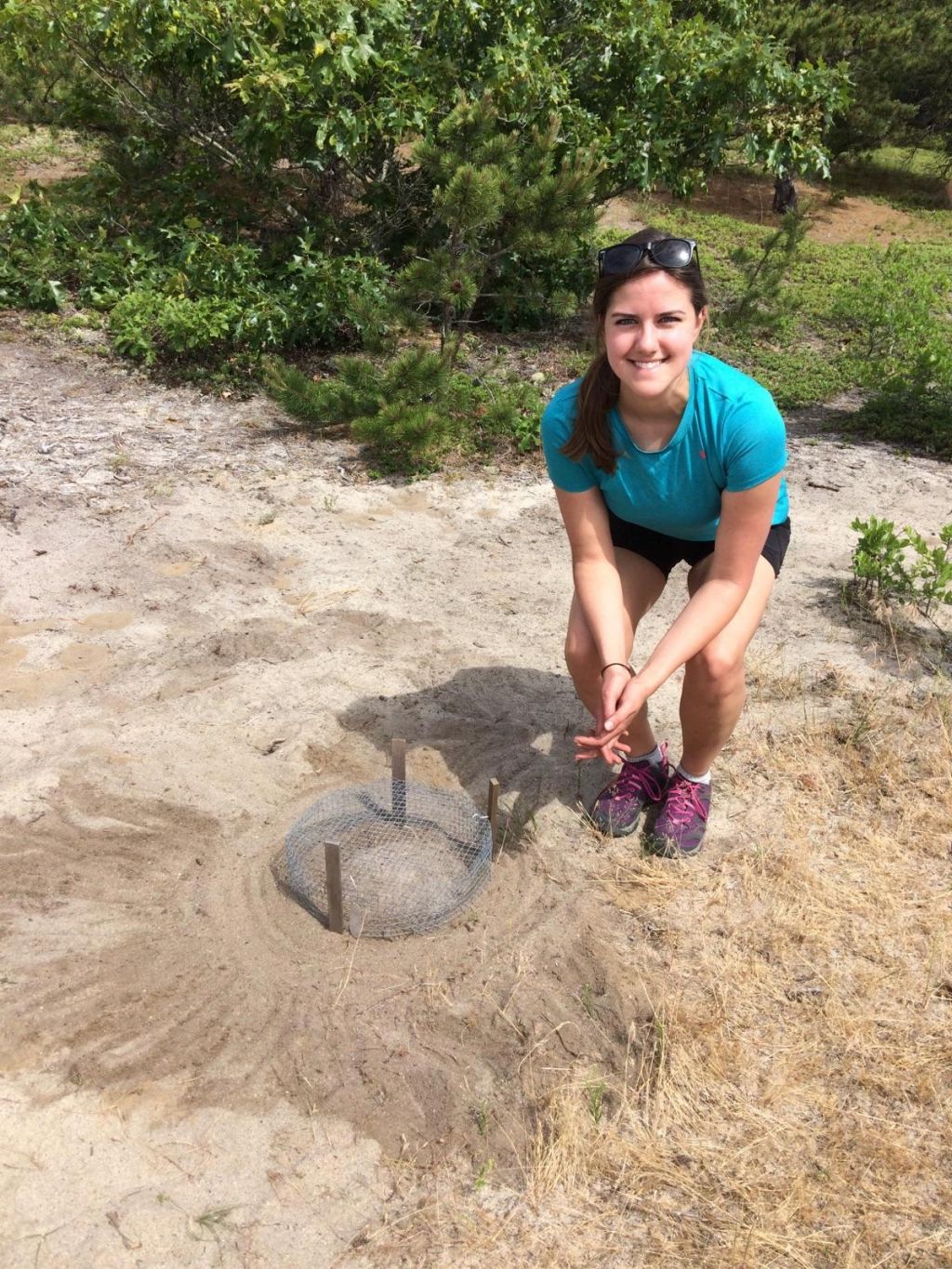It’s probably safe to say Nancy Rabke hasn’t met a conservation or science project she didn’t like.
And she’s not afraid to take on the hardest jobs: from surveying horseshoe crabs at night or rescuing stranded sea turtles, also at night—even in blustery cold! And like many of her fellow diamondback terrapin volunteers, she’ll do what it takes to protect turtle nests despite heat and greenhead flies.
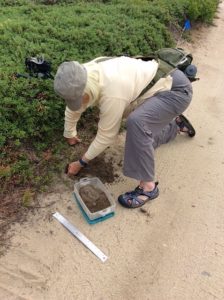
Nancy Rabke relocates a terrapin nest to a safer spot on Lieutenant’s Island (photo by Sue Reiher)
Nancy’s drive as a Wellfleet Bay volunteer may reflect her earlier years as a member of the Peace Corps when she was assigned to Ivory Coast in Africa. After retiring as a school nurse, Nancy plunged into sea turtle rescue in 2009. She was being trained on South Sunken Meadow Beach by Jerry Hequembourg when they came upon a stranded green turtle in the wrack line. “Picking up that turtle , so cold and thin, but luckily still moving well, I realized how crucial it was to get this turtle back to an environment where it could thrive,” Nancy recalls.
And whether it’s rescuing a cold turtle or surveying for spawning horseshoe crabs, Nancy says she really doesn’t mind walking the beach at night. ” There is a special beauty and peacefulness about it, even when there are blustery conditions. But I probably wouldn’t do it without the incentive of finding a sea turtle or helping with horseshoe crab data!”
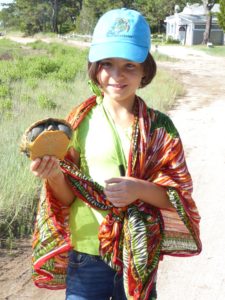
Nancy’s 8 year old granddaughter Zizi Verani (photo by Nancy Rabke)
The daily job of counting glass eels at the eel ladder isn’t the most exciting work in the world, but Nancy says she enjoys talking to people, especially kids about what she’s doing and why. And her work at Wellfleet Bay has impressed the children in her own life. ” The knowledge and experience I have received allows me to have a little niche of expertise to share with my grandchildren which, hopefully, will influence their future choices.”
With the roles of trail naturalist and marine life cruise volunteer rounding out her roster of duties, it’s probably not a surprise to learn that Nancy is one of 17 volunteers to have clocked more than 250 hours in the past fiscal year.



